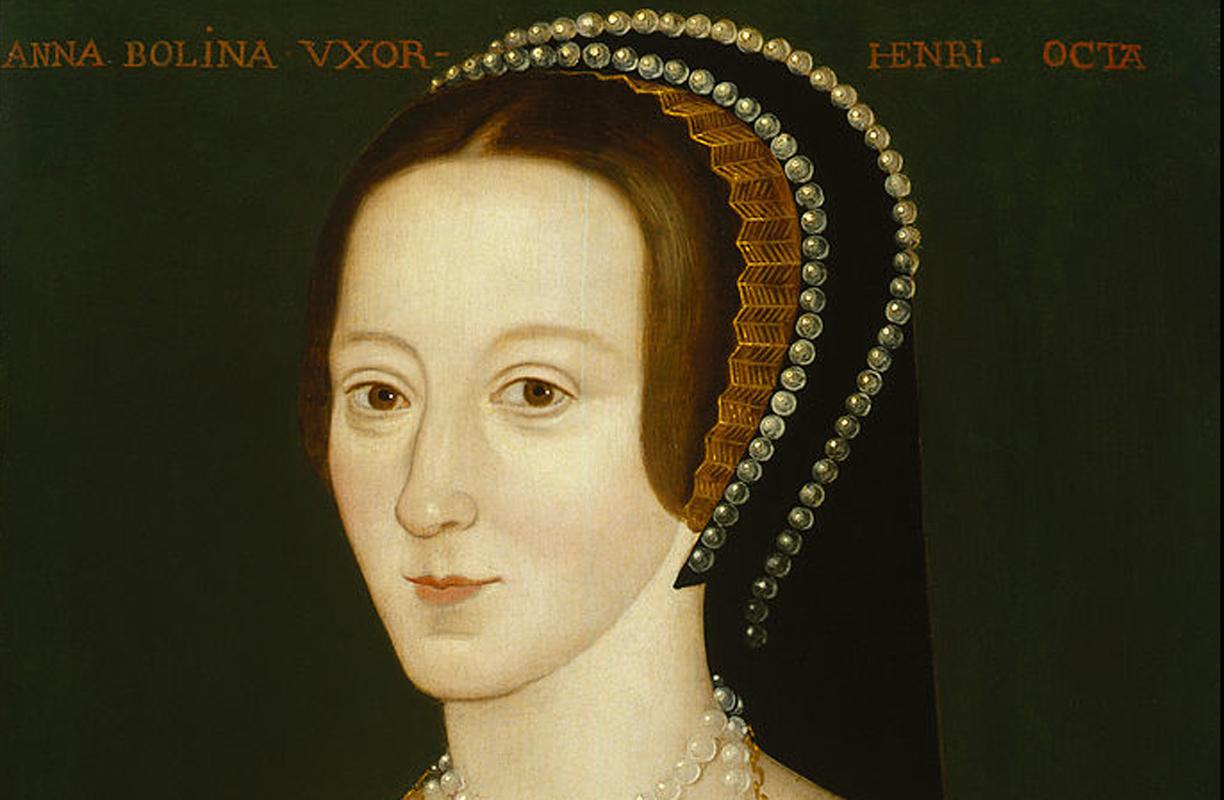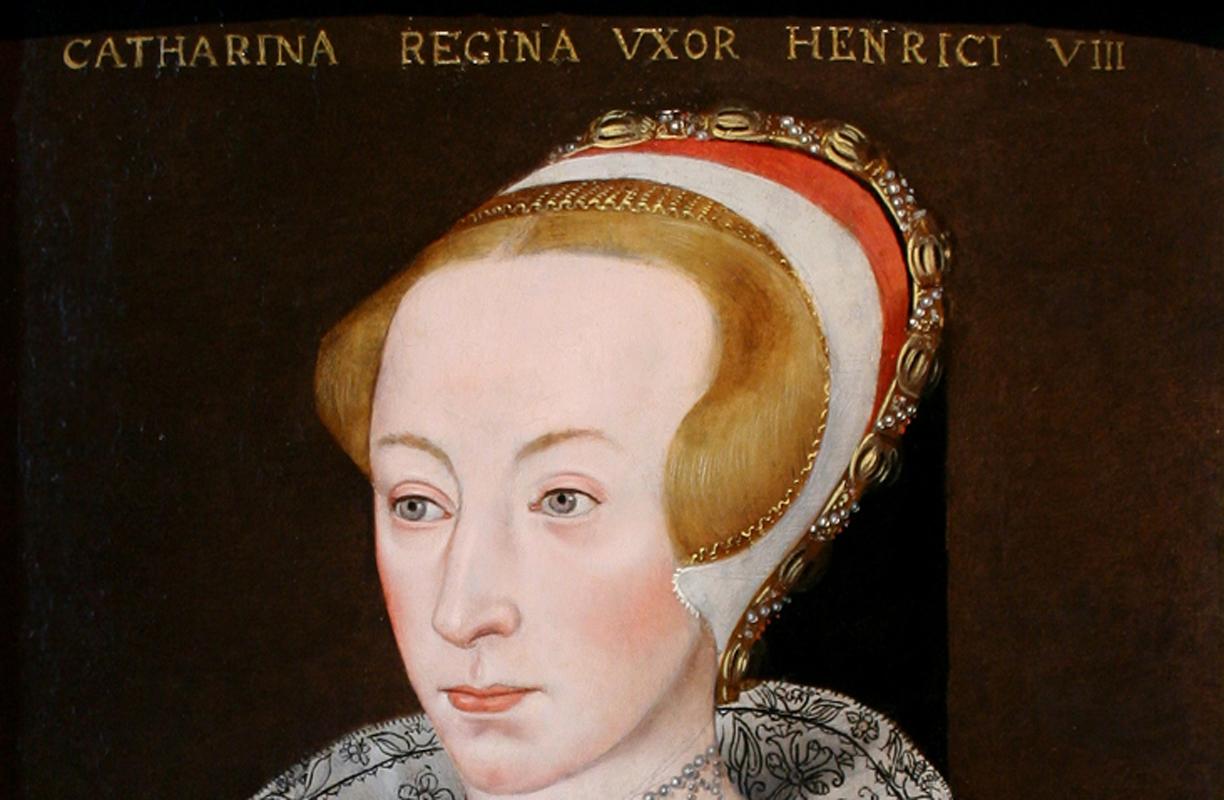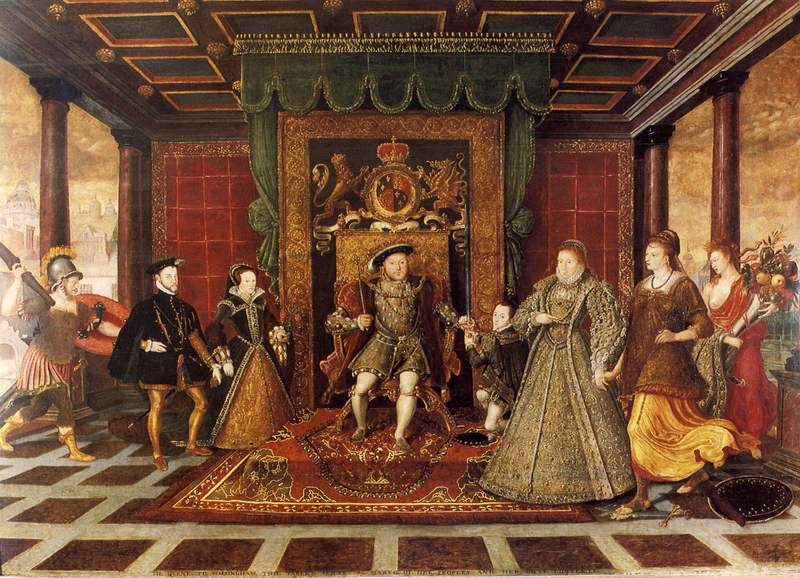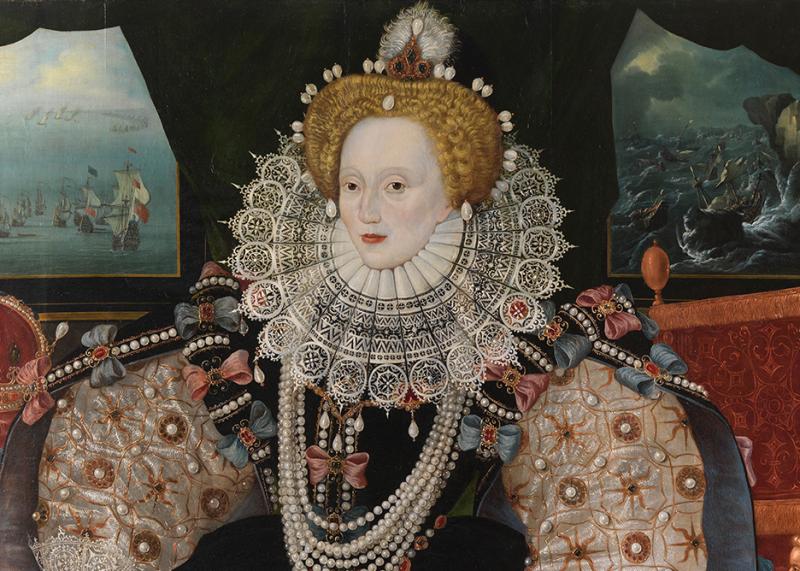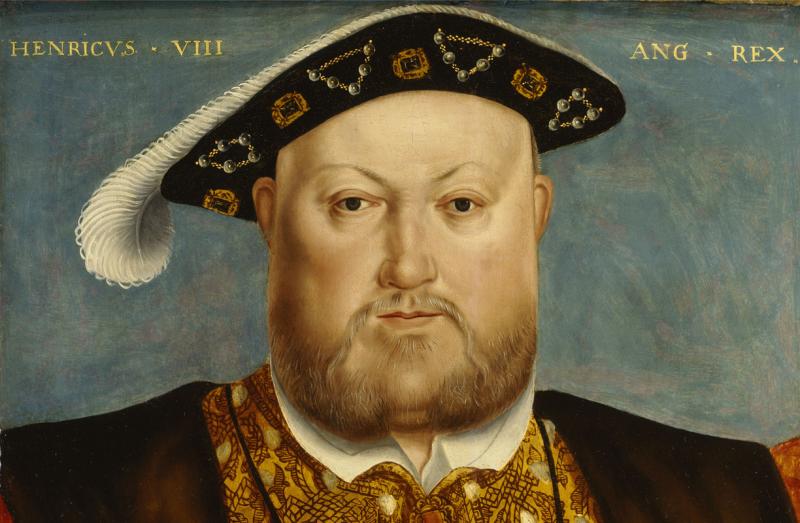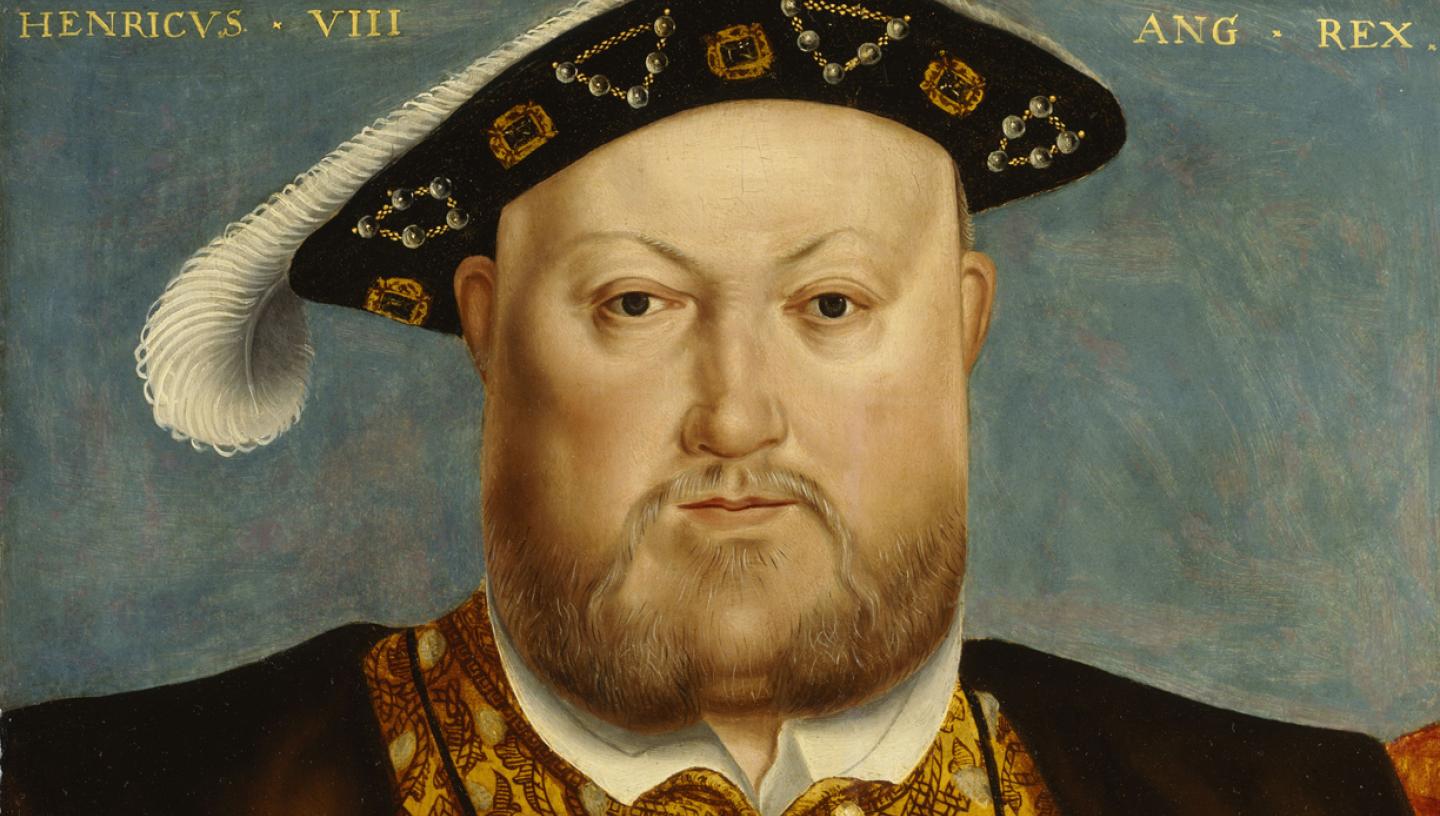
Henry VIII (1509-1547) is one of history’s most famous monarchs. His radical political and religious upheavals reshaped the Tudor world. He is best known for his six marriages and his life-long pursuit of a male heir. His six wives and their lives are the subject of much fascination and speculation that continues to this day.
Henry VIII’s wives in rhyme
While Henry’s six marriages reflect his persistent desire for a male successor and his focus on creating and maintaining important political alliances.
However, it can make it difficult to remember the fate of each of Henry’s wives. This famous rhyme tells of the outcome of the six wives of Henry VIII:
King Henry VIII,
To six wives was wedded.
One died, one survived,
Two divorced and two beheaded
Another popular mnemonic device is:
Divorced, beheaded, died;
Divorced, beheaded, survived
This is respectively:
Katherine of Aragon, Anne Boleyn, Jane Seymour
Anne of Cleves, Katherine Howard, and Katherine Parr.
Henry VIII's six wives
Katherine of Aragon
1485 - 1536
Married: 1509 - 1533 (Annulled)
Surviving Children: Mary I
Henry VIII’s longest marriage was to Katherine of Aragon, daughter of King Ferdinand and Queen Isabella of Spain. Eight years before her marriage to Henry in 1509, Katherine was married to Henry’s elder brother, Arthur, who died of sickness at just 15 years old.
Together, Henry and Katherine had a daughter, Mary Tudor, who was born at Greenwich Palace, but Henry wanted a son. Frustrated at Katherine’s perceived inability to produce a male heir and now in love with one of Katherine’s ladies-in-waiting, Henry declared their marriage nullified in 1533.
Henry claimed that since his wife had previously married his brother, the marriage was invalid. Katherine vigorously contested this charge, explaining that the marriage was never consummated. When the Pope refused the annulment, Henry VIII officially started his own church, the Church of England.
Anne Boleyn
c. 1500 - 1536
Married: 1533 - 1536 (Beheaded)
Surviving Children: Elizabeth I
Anne Boleyn became the subject of Henry’s affections after he had an affair with her sister Mary. While still legally married to Katherine, Henry began showing his esteem for Anne, openly honouring her in his court and granting her the title of Marchioness of Pembroke in September 1532.
Anne steadfastly refused the King’s advances until she received a marriage proposal, with the couple marrying in secret in early 1533. By this time, Anne was pregnant with her first child. In June 1533 she was crowned Queen of England and they had a daughter: the future Elizabeth I.
Despite at least two miscarriages following the birth of Elizabeth at Greenwich, Anne remained in a position of relative power. Henry, however, had a naturally jealous and suspicious character, and was persuaded by an advisor that Anne was unfaithful. Indeed, it was from the jousting grounds at Greenwich that the command came to imprison the queen. Following accusations of numerous crimes based on little evidence, Anne was arrested and beheaded.
Jane Seymour
1508/9 - 1537
Married: 1536 - 1537 (Died)
Surviving Children: Edward VI
In May 1536, Henry married Jane Seymour. Unlike his previous wives, Jane never had a coronation and so was never crowned queen. In October 1537, Henry finally got his wish with Jane giving birth to the future King Edward VI. Sadly, Jane died less than two weeks after the birth. While opinion is divided as to what caused her death, it is generally assumed that it was a result of a complication from pregnancy.
Jane was laid to rest in St George’s Chapel at Windsor Castle. Upon Henry’s death, he was buried beside her. Their son Edward would die at Greenwich in 1553.
Anne of Cleves
1515 - 1557
Married: Jan. - July 1540 (Annulled)
Surviving Children: None
Following Jane Seymour’s death, Henry spent time in mourning. As time passed, the King and his ministers felt that England needed a foreign ally against the Catholic Church. Hans Holbein the Younger was dispatched to paint a likeness of Anne, with which Henry found favour.
However, on Anne’s arrival to England, Henry expressed concerns that Anne was already married (her figure looked too voluptuous to him for her to be a maiden). While he was eventually convinced that she was free to marry, and the marriage did take place, he was unable to consummate their marriage. The marriage was annulled months later. Anne was given a settlement in compensation for the annulment.
She spent the rest of the king's life in England, maintaining her own household separate from Henry's. Anne, however, kept up friendly relationships with the king and his children for the rest of her life, ultimately outliving both Henry and Edward.
Katherine Howard
1518x1524 - 1542
Married 1540 - 1542 (Executed)
Surviving Children: None
Next in line to marry King Henry VIII was Katherine Howard – maid of honour to Anne of Cleves. By the time they married in July 1540, Henry was forty-nine years old, while Katherine a young woman (her exact birthdate remains uncertain). No longer a young man, Henry had become corpulent, and an old jousting wound in his leg had opened and caused him much pain.
Katherine was accused of treason for failing to disclose her sexual history prior to her marriage with Henry, and for illicitly meeting with another man during the marriage. Just months after being stripped of her title of queen, Henry had Katherine beheaded in February 1542.
Katherine Parr
1512 - 1548
Married 1543 - 1547 (Widowed)
Surviving Children: Mary Seymour (died in infancy)
The last of Henry VIII wives was Katherine Parr, who he married in July 1543. She proved to be a kind wife who looked after Henry in his sickness, and a good stepmother to the king’s three children, Mary, Elizabeth and Edward.
Katherine had many ties to the royal family from a young age. She was named after Katherine of Aragon, and the Parr family were close to the original royal couple. Her friendship with Mary, Henry's daughter, was how she eventually met Henry. She is descended from King Edward III - all of Henry's wives were descended in some way from the Plantagenets.
Katherine’s evangelical zeal for Protestantism made her many enemies in Henry’s court who tried to turn the king against her. However, she convinced Henry she was loyal to him. Henry trusted her so much that in the event of his death, he named her Queen Regent. The king died at fifty-five in January 1547.
Though remembered as one of Henry's wives, Katherine has her place in history: with four husbands, Katherine Parr is England's most-married queen. She was also an important patron of letters and the arts, as well as being the first woman to be published under her own name. She was a key early influence on her stepdaughter Elizabeth I.

